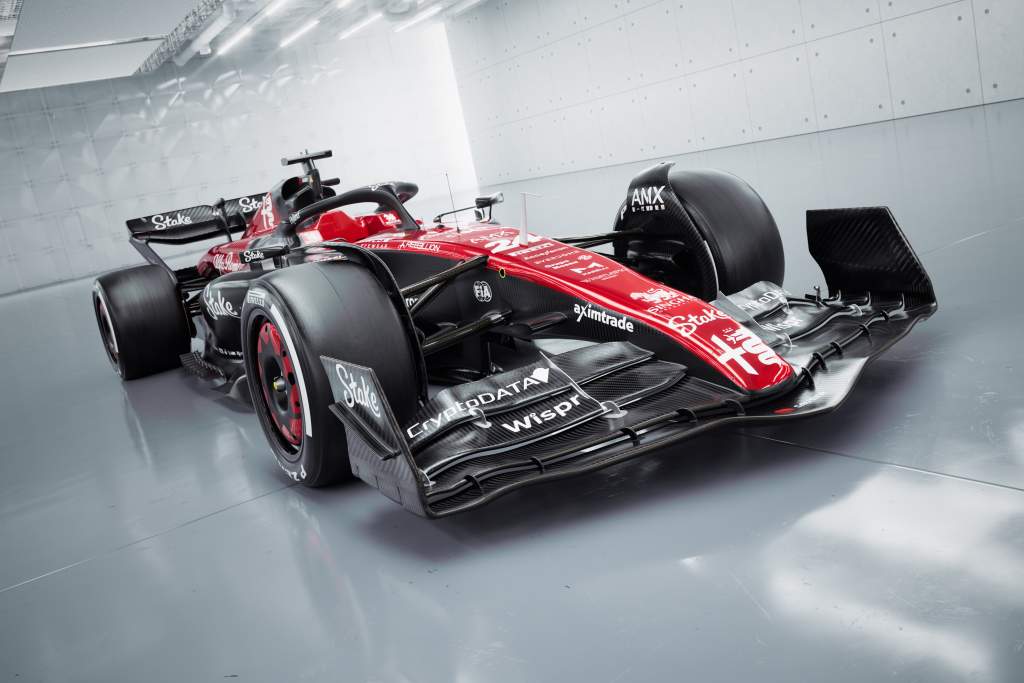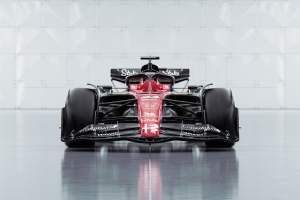Up Next

Alfa Romeo is the first Formula 1 team to sort of introduce its new car for 2023. I’m pretty sure there will be many changes before it first hits the track but at least the main architecture of the car is there.
For Sauber, which operates Alfa Romeo and will slowly merge into a fully-fledged Audi F1 team, this year needs to be a step in the right direction to show it is worthy of that huge investment.
The initial investment for Audi, which now owns 25% of Sauber, will allow the team to work right up to the cost-cap level – and as Audi is not fully taking over until the new power unit rules come into play for 2026, it will also allow for three years of investment in its facility to bring it up to date.
So what of its car for 2023, the C43? Here’s a comprehensive look at it, starting at the front.
Front wing
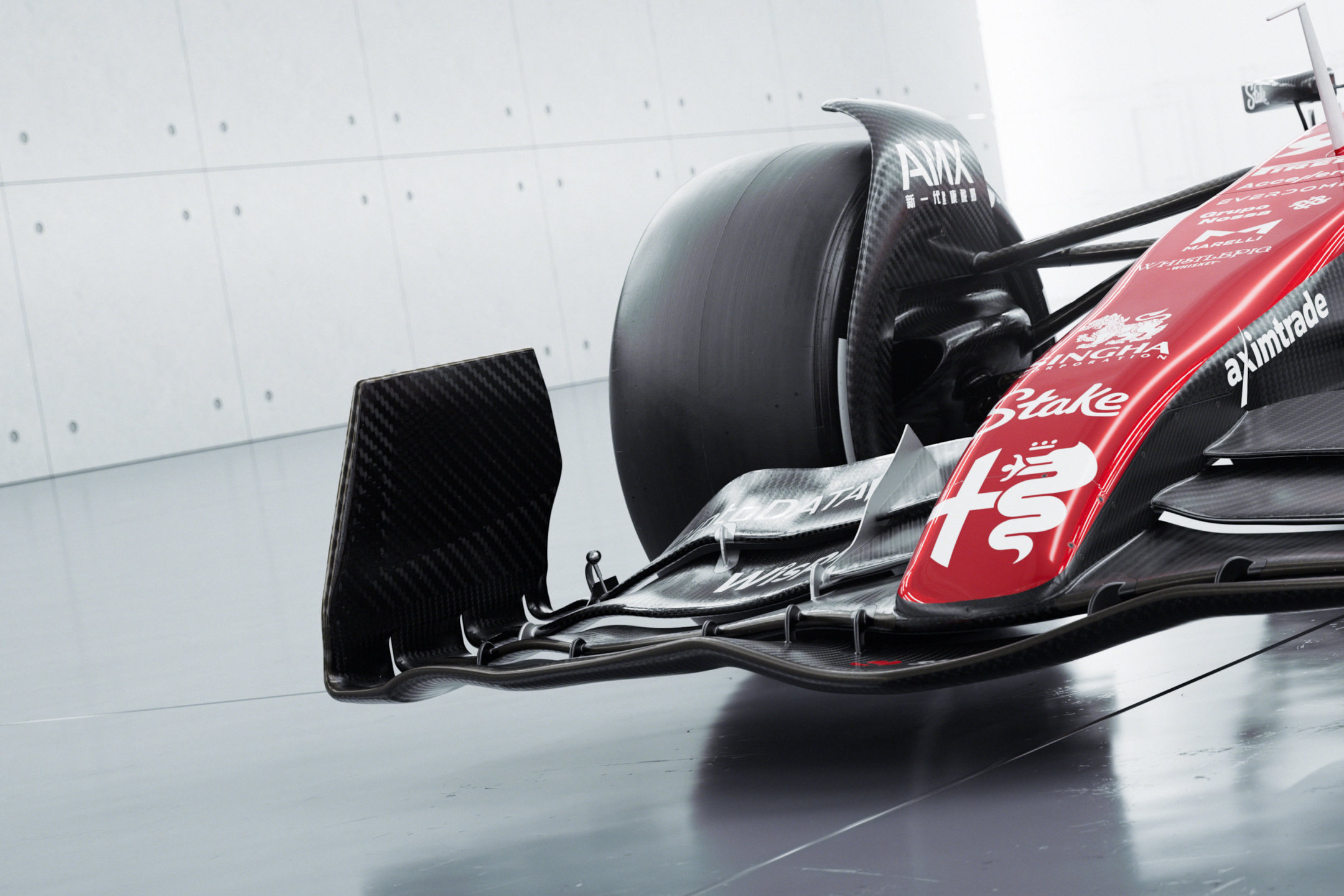
Sauber has retained its leading edge flow-conditioning philosophy, which gives it a full-width slot gap between the first and second element.
This improves the consistency of the airflow to the underneath of the nose and, as this area is what feeds the central part of the underfloor, it will also help the consistency of the underfloor. The flap loading across its span is fairly uniform so again improves flow consistency and reduces the potential of crossflow affecting that airflow further downstream.
Front suspension
Alfa Romeo has retained pushrod front suspension, but the anti-lift and dive characteristics of the wishbone inner-leg positioning have been reduced.
I’m a little surprised by this, as along with Red Bull it was one of only two teams to go down this route. Controlling the height change with varying longitudinal forces should only be a good thing.
The steering trackrod is round and just under the top wishbone forward leg. It’s not quite in line, but is fairly close to it. Being round, it will have very little effect on the airflow coming off the trailing edge of the front wing flap.
Alfa is using the top wishbone legs to optimise this flow to the leading edge of the sidepod.
Sidepod leading edge
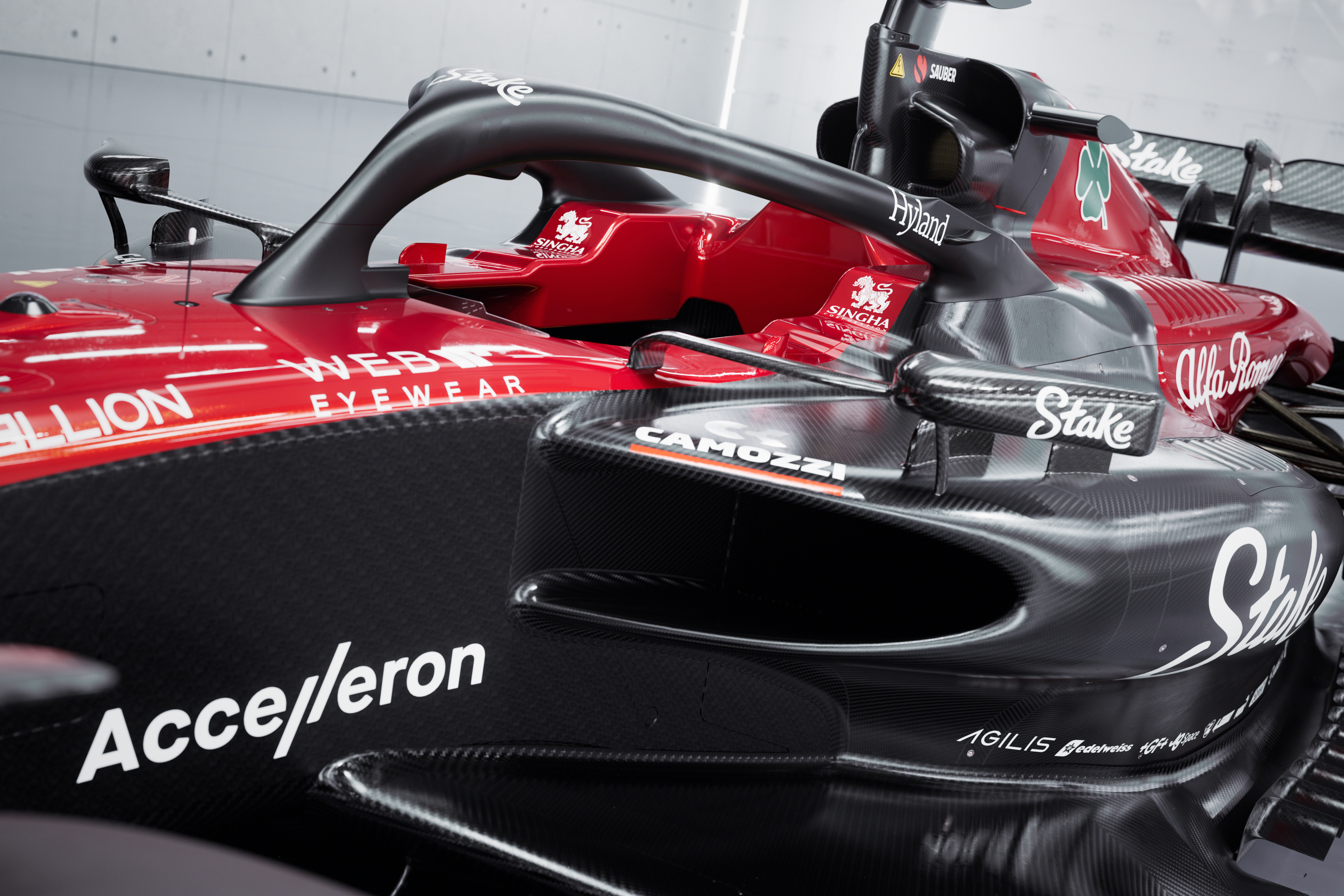
Sauber has opted for a Ferrari-style radiator inlet which allows the excess flow at high speed to flow from the outer corner and down the sidepod into the coke bottle area. This means that the excess flow will not affect the underfloor, giving more consistency at high speed (a weakness the team has identified from last season that needs fixing). The undercut is not as dramatic as last year’s Ferrari version; it is more flowing, similar to last year’s Red Bull.
Underfloor leading edge and turning vanes
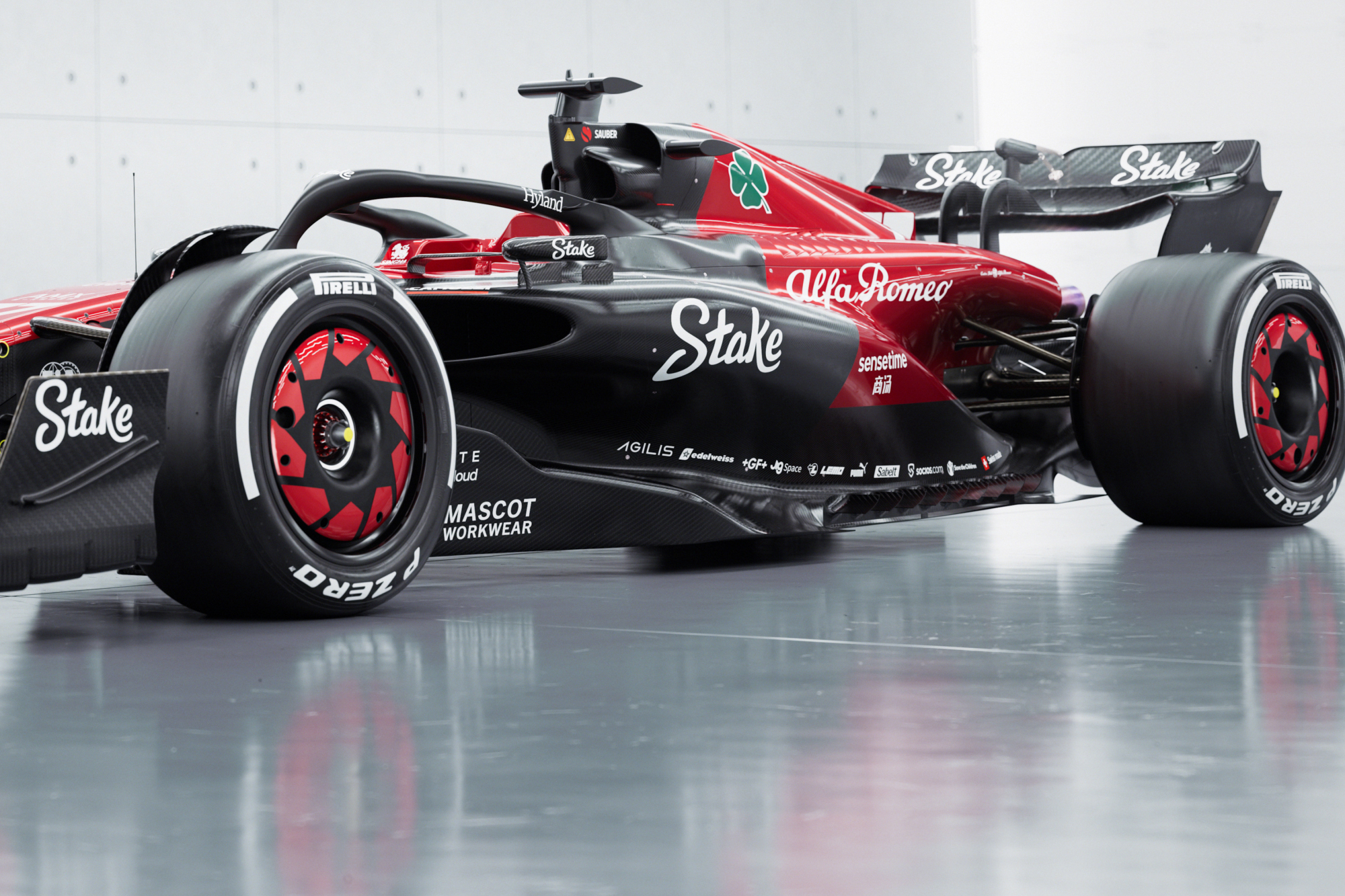
The leading edge of the floor looks like it is fairly high. I’m not a fan of this as I believe it will reduce the potential for underfloor downforce, but it will improve the consistency of that downforce so losing a little with one hand means you gain a little with the other.
It’s very difficult to see any of the turning vanes, however the outer one is more or less as big as the regulations allow which will separate the turbulent airflow coming off the front tyre from the leading edge of the sidepod.
Side impact treatment
This area is fairly conventional. There’s no trace of a Mercedes-esque independent SIP fairing from last year. There doesn’t seem to be any trace of the ends of the SIP structures so this means that the body surface easily encompasses what’s underneath the body surface. I’m all for nice simple lines but perhaps pushing the limit a bit more here would have paid decent returns.
Sidepods

These are fairly simple in that the upper surface and the side surface sweep downwards and inwards. There’s no dramatic change of shape, however there does seem to be a little bit of a disconnect just behind the halo and before the red paintwork on the engine cover starts.
It looks like this was a change of philosophy when it discovered that using a letterbox-style higher rear radiator exit was an improvement. This may have had to be adapted to the chassis lines, which Sauber had probably committed to by that time.
Rollover bar and engine cover
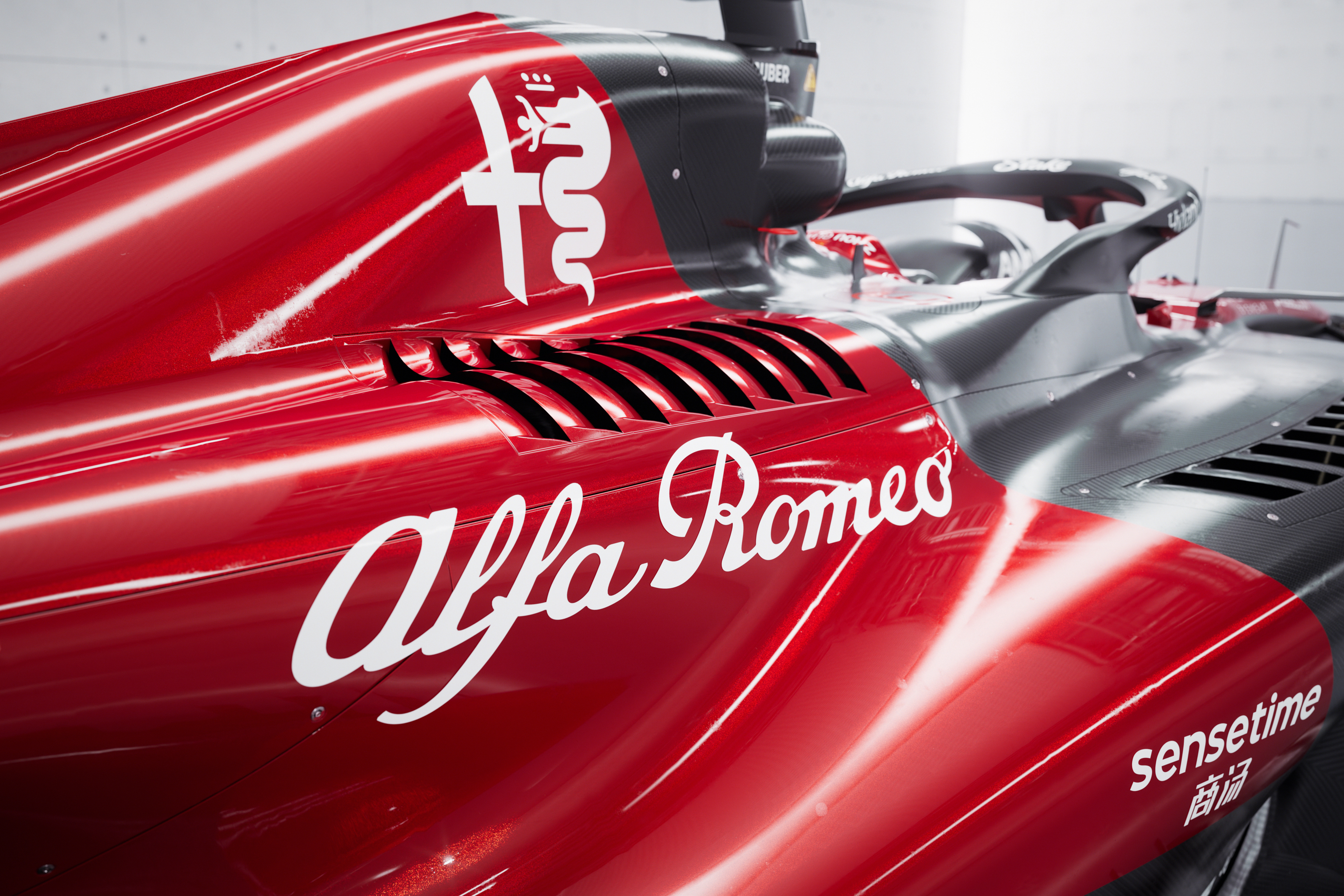
This area is a bit messy. Again, if you compare it to last year’s Red Bull there is a lot going on around these inlets, and Sauber seems to have retained the more or less central spike-style rollover bar concept.
It needs to be stronger and taller than last year and this extra height has allowed it to utilise the two more rearward cooling inlets, separating them from the engine intake, which will be the lower one.
The flow and any spillage in this area at high speed can affect the rear wing negatively so it’s an area where flow management and getting it to attach to the engine-cover surface again will bring rear wing performance consistency.
Floor sides
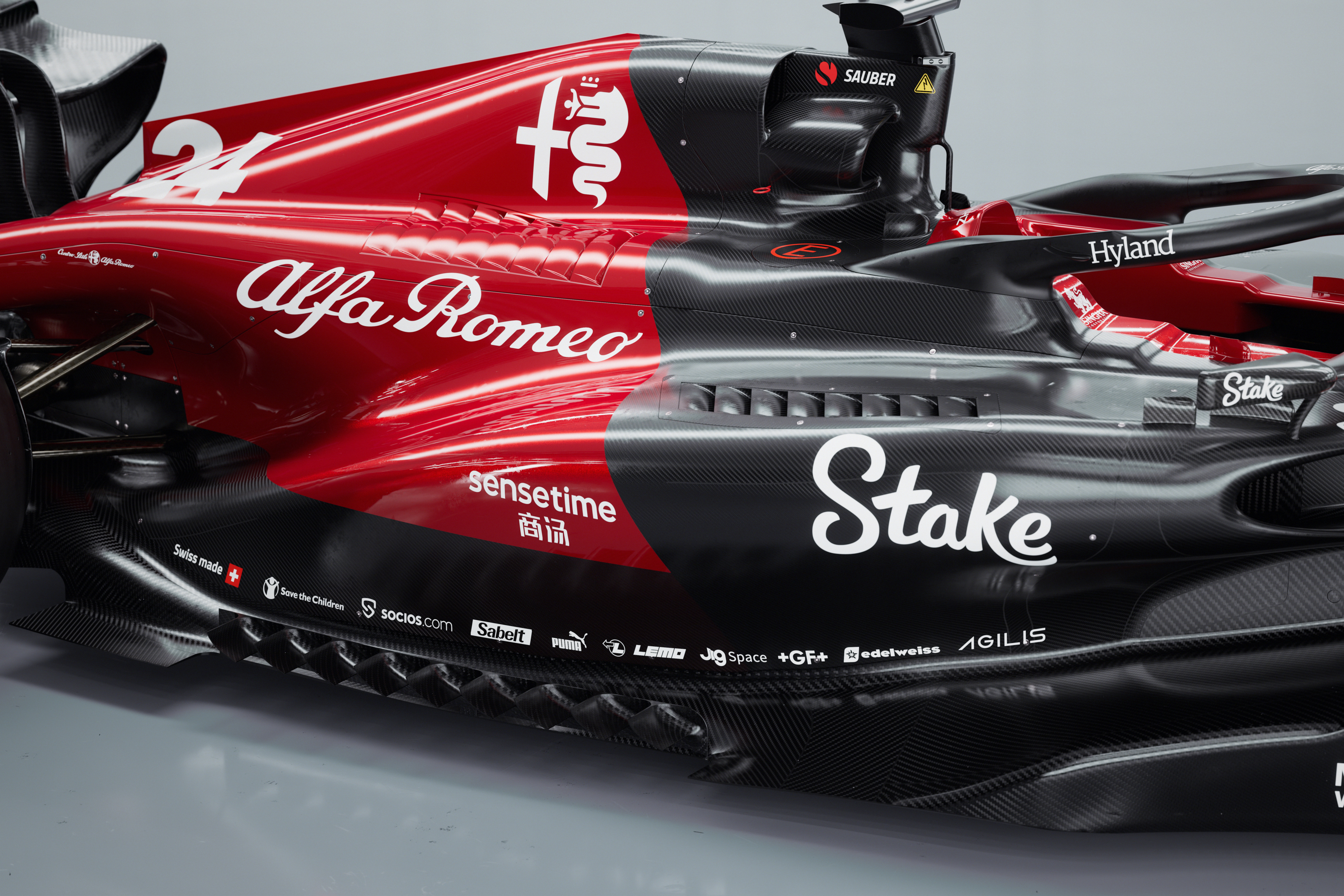
This is the first we have seen of how a team has adapted to the new increased height outer floor edges. It’s interesting to see this row of louvres on the renders in that area and I will be surprised if that is what we will see when the car hits the track.
This is an area where the team will be keeping its real solution close to its chest. How you work that front corner of the floor and seal the sides will be critical to the car’s overall performance, so we will need to wait until the Bahrain test before we can offer an opinion.
Coke bottle area
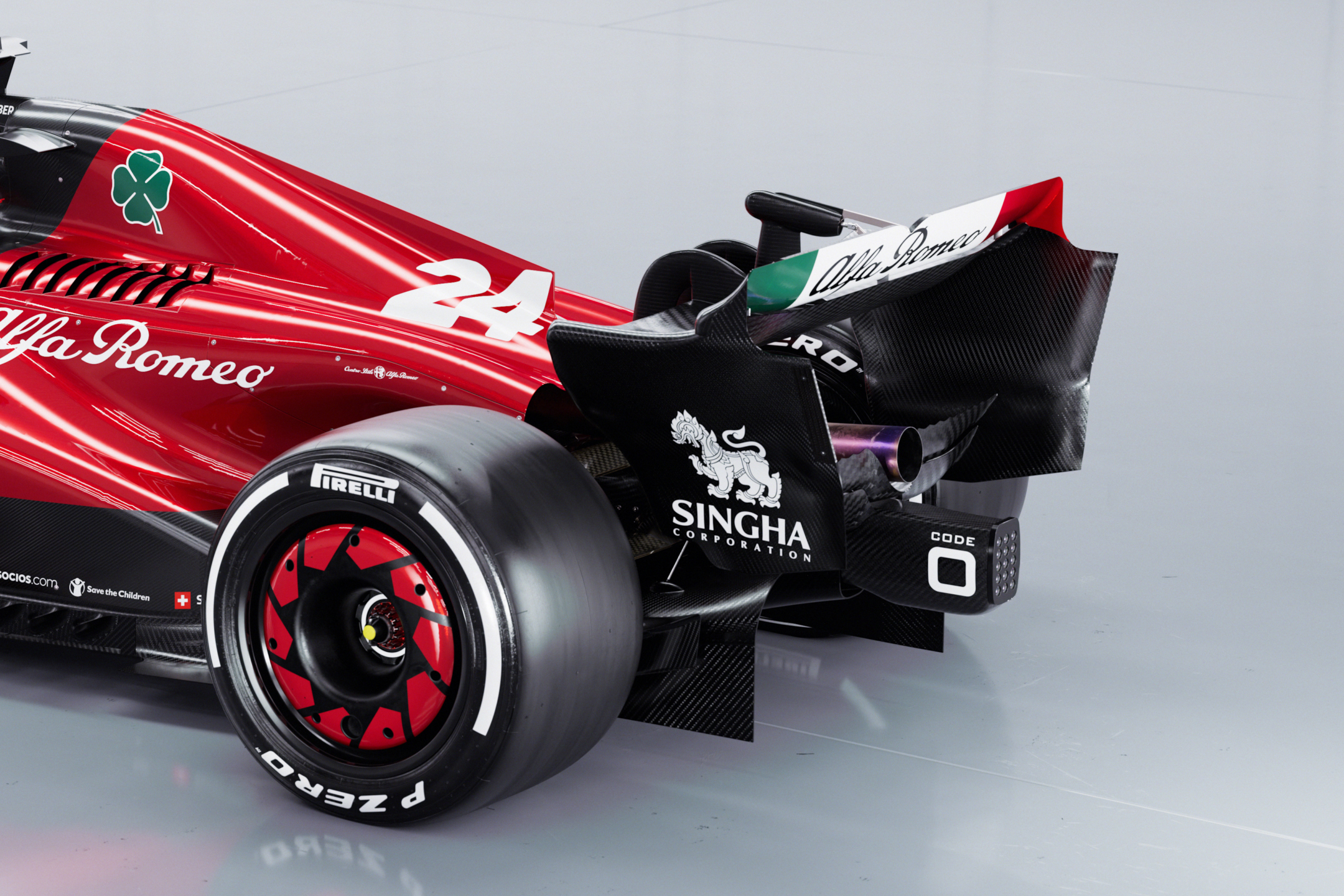
The design is more open than last year because of these flowing sidepods. It’s a critical area to get as much flow through there as possible to reduce the base pressure on the outer edges of the floor and to improve the performance of the diffuser. To do that the rear suspension layout needs to be as sympathetic as possible to the airflow.
Rear suspension

The renders show the rear suspension system is a pushrod configuration, but the pictures on YouTube (above right) show it as pullrod, which is what I think is the direction the team has taken. When you look at the letterbox radiator outlet, having a pullrod rear suspension will open up the exit area over the top of the gearbox.
Neither is right or wrong, it’s just what fits in with your concept best and it seems the letterbox cooling exit came along late in the design stage because it seemed to require a change in the flow lines on the engine cover at the back of the chassis to the front of the engine.
Diffuser
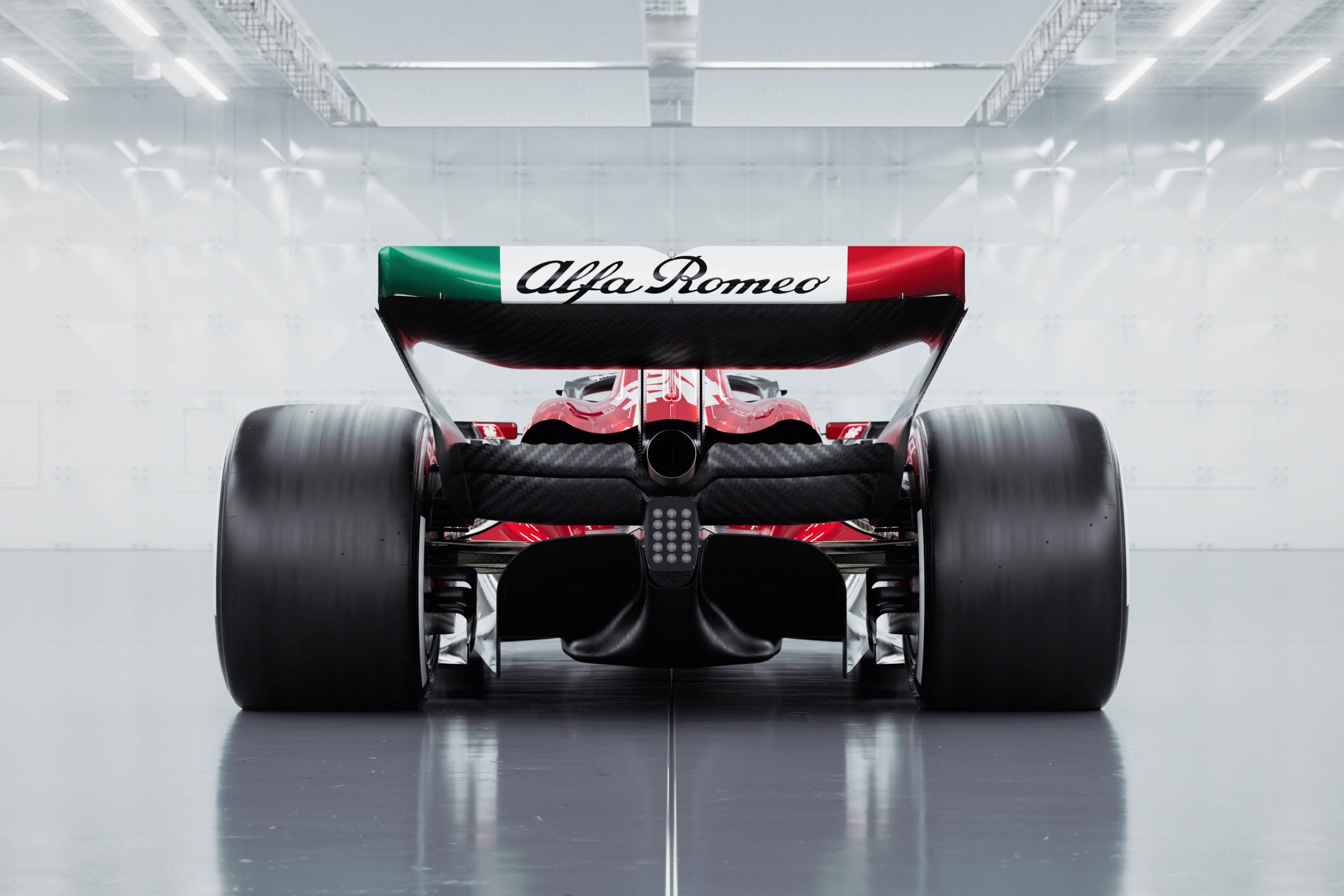
This is based on what we saw in the renders. It utilises more or less the maximum area that the regulations allow. I’m pretty sure this render shot is not the final version.
I am a fan of the large fillet radius between the top surface and the sidewalls of the diffuser. Again, this can be a clear benefit when searching for consistent aerodynamic stability, which is something that last year’s car seemed to lack on quite a few occasions.
This diffuser trailing edge is topped off with a fairly brutal beam wing. There’s not really a lot to say there, other than it’s a bolt-on component so I wouldn’t be surprised to see changes to suit the varying circuit requirements.
Rear wing
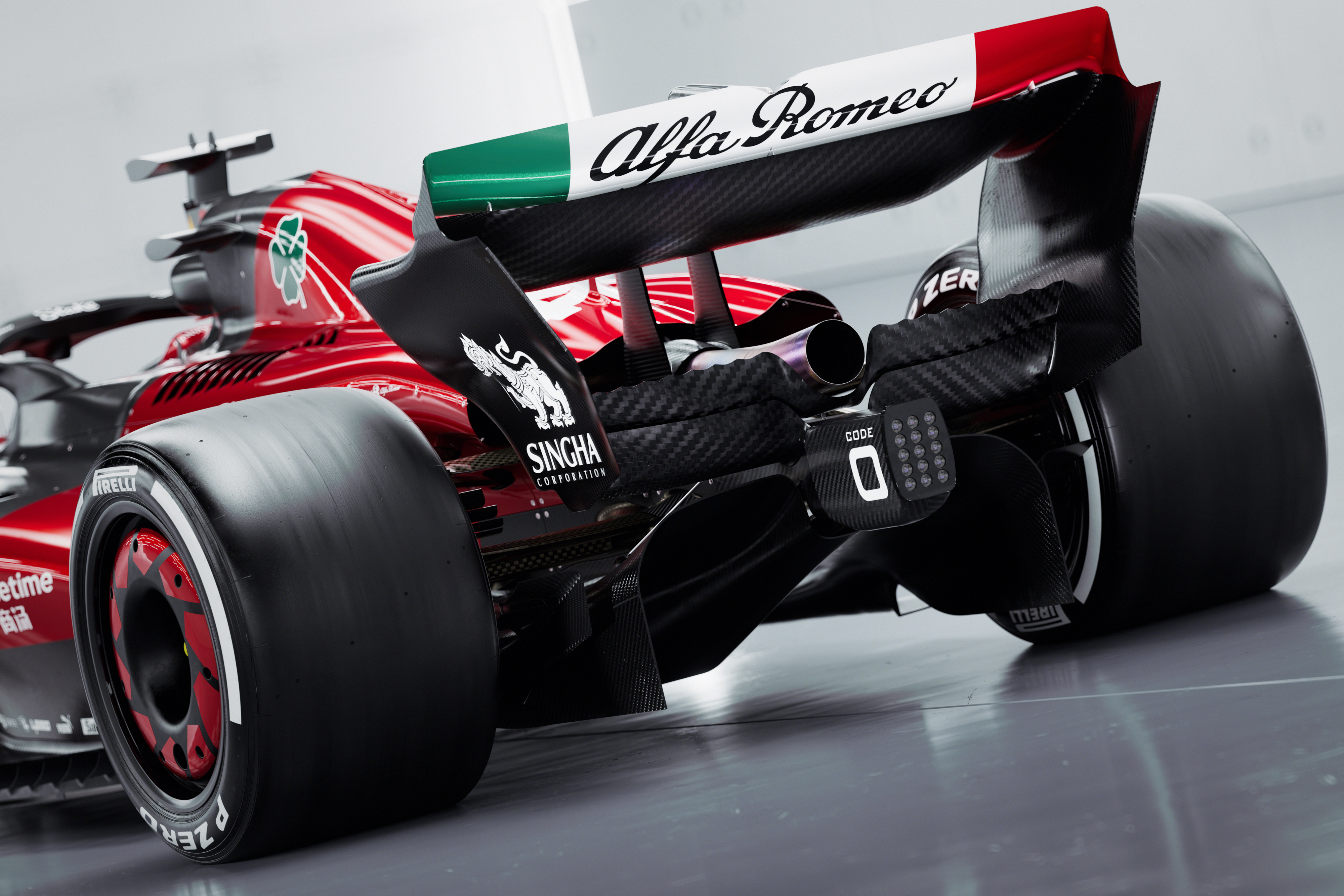
Outlawed this year is the Aston Martin approach to the endplate detail we saw last year. Again, this is a bolt-on component so it will be developed to suit varying circuit requirements.
Overall, it is difficult to say what we will see when pre-season testing kicks off, but I’m sure there will be many changes.
If I was to give my opinion on what I have seen so far from the release coverage and the renders, I would say it all looks a bit too simple. I’m sure there would be more performance from pushing the boundaries just that little bit more.
It is a tidy car, but not striking by any means.


